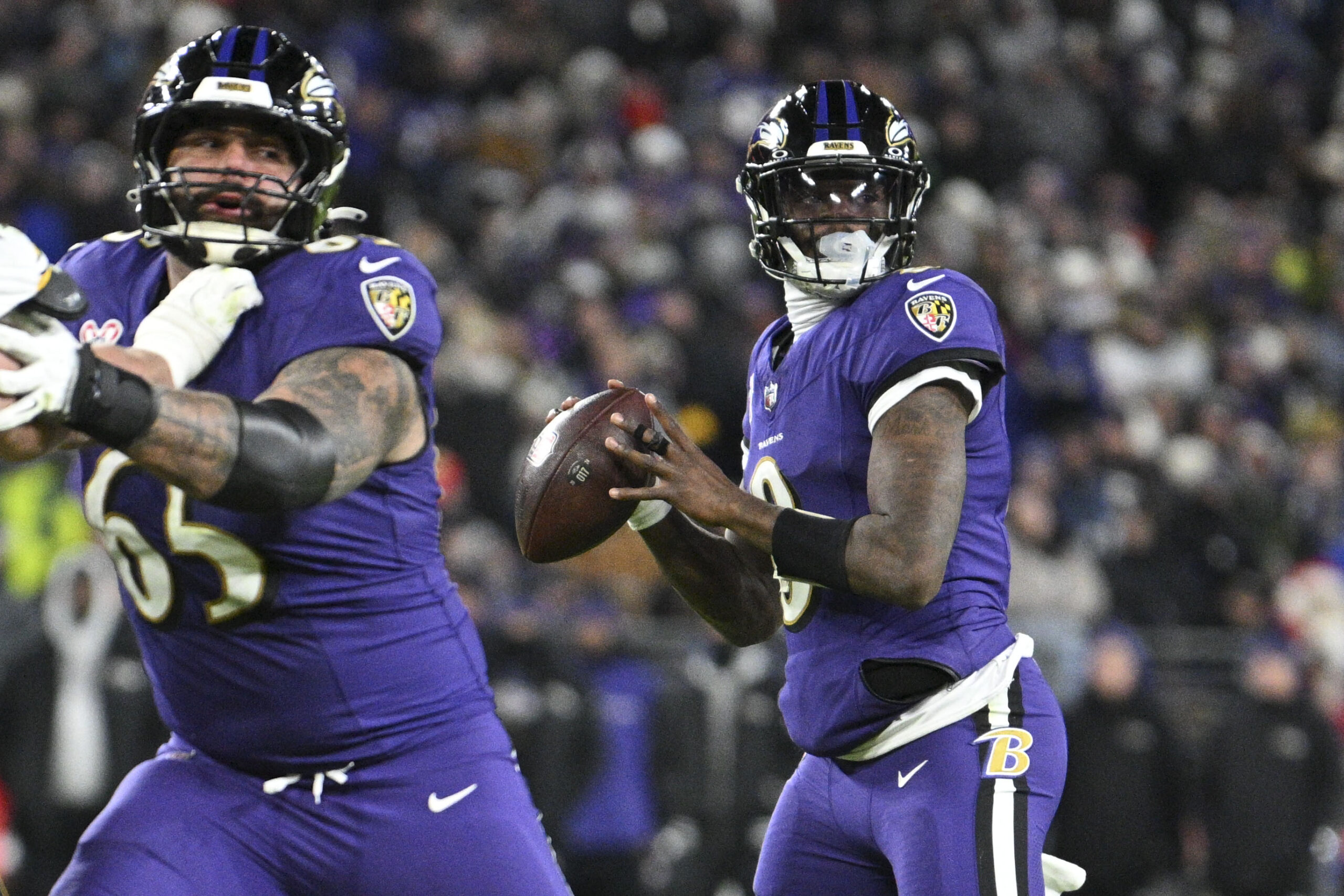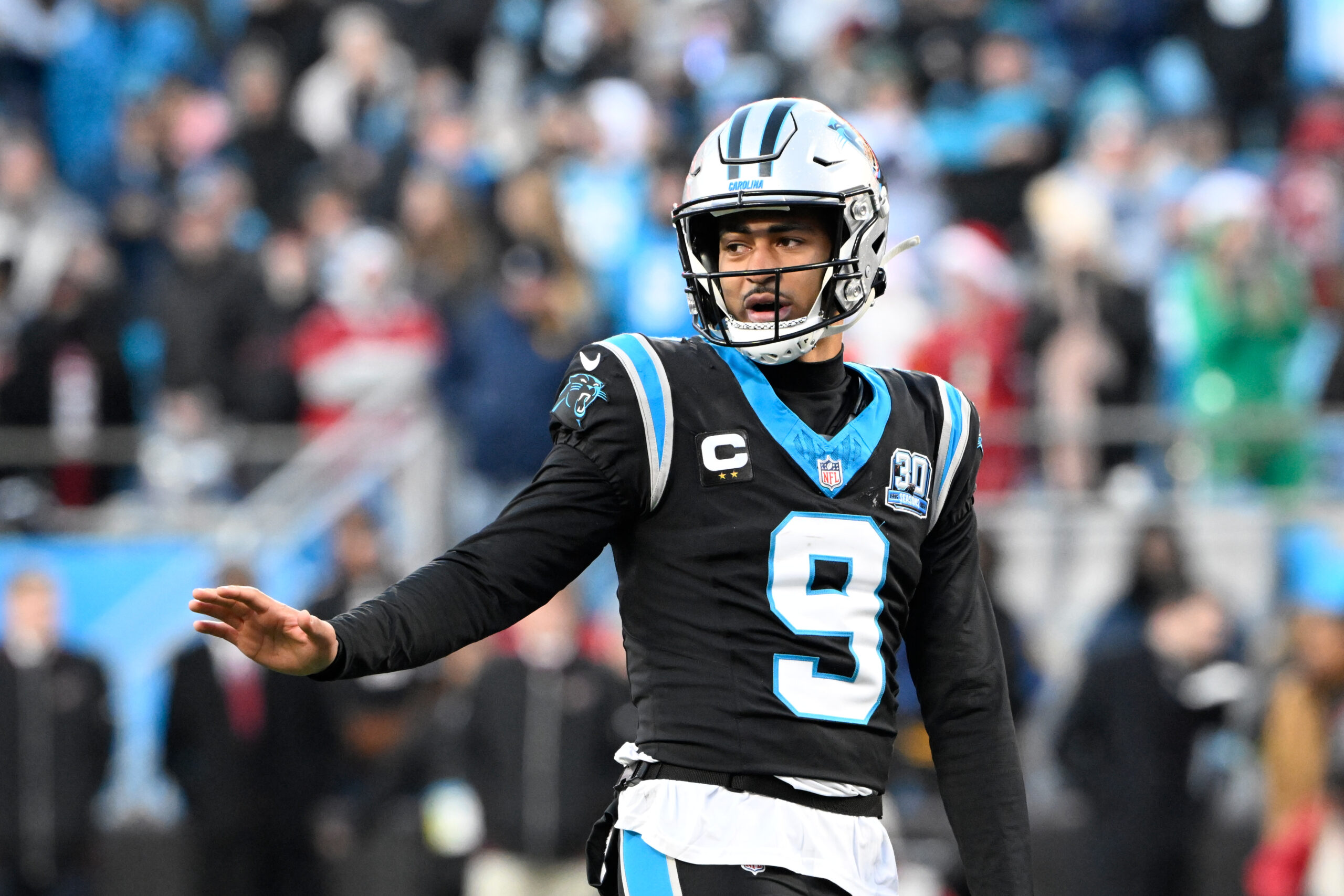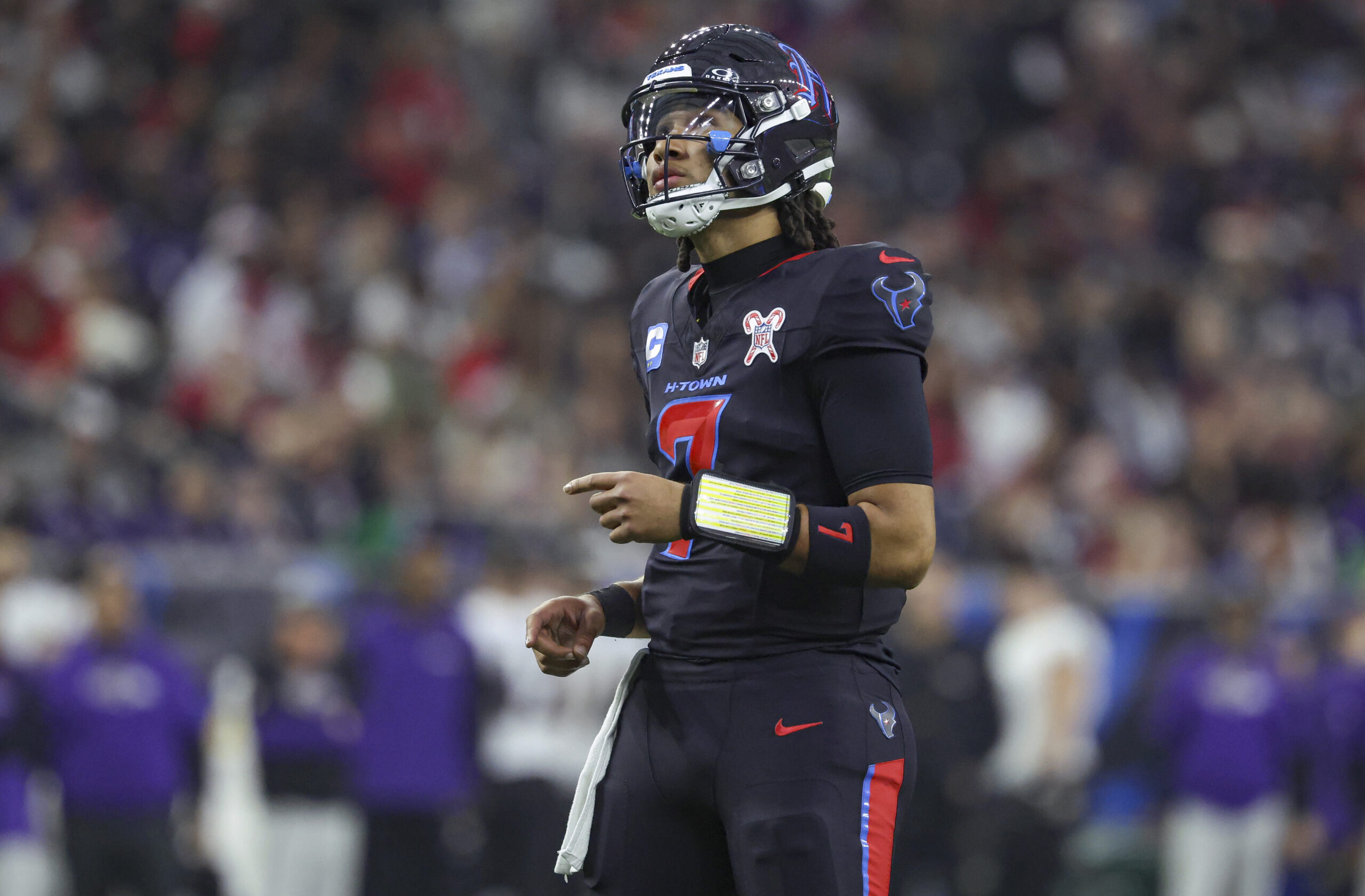NFL Analysis
2/19/24
11 min read
2024 NFL Offseason's 5 Most Intriguing Teams
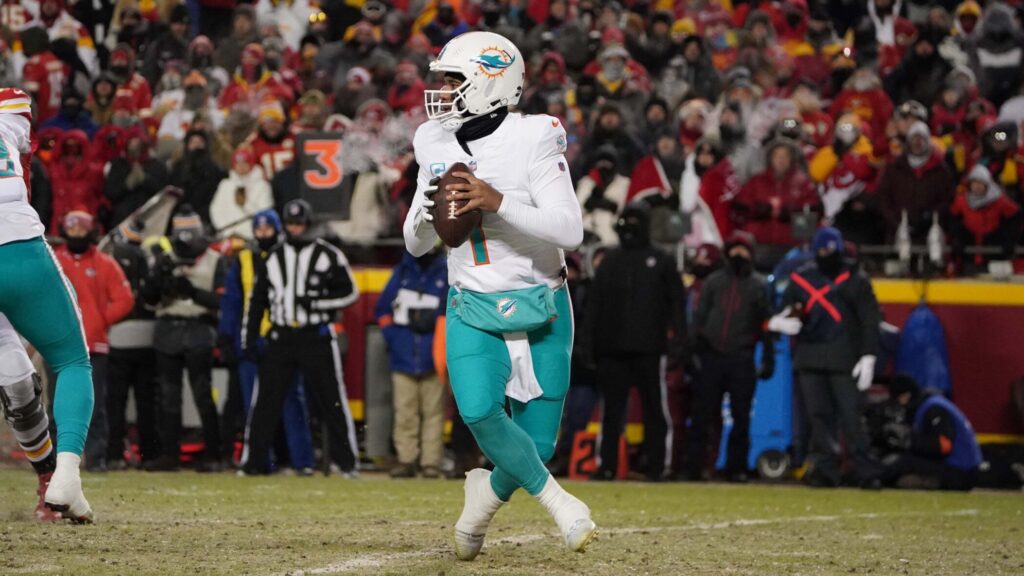
It doesn’t take long after the Super Bowl for the NFL offseason to be in full swing. We’re just a few days from the NFL Combine and less than a month away from the start of free agency.
As the offseason unfolds, we’ll get a few teams that appear to be in control of the movement. These teams have excess draft capital, cap space or critical decisions that will shape the rest of the offseason.
With that in mind, here are five of the most interesting teams for the 2024 NFL offseason.
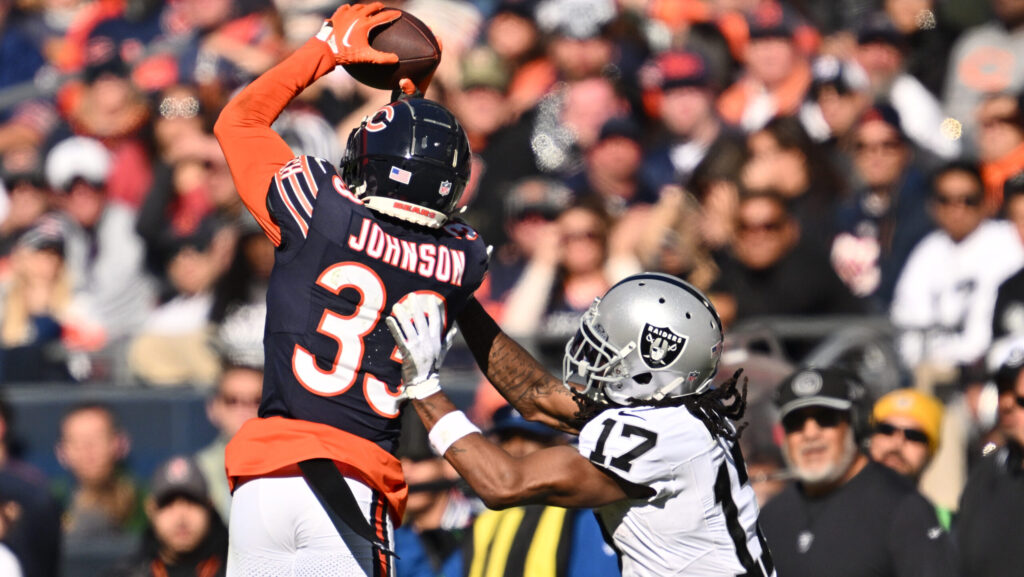
 Chicago Bears
Chicago Bears
It doesn’t matter where they go. The Chicago Bears will run the 2024 offseason. Chicago holds the first overall pick in the draft, a trade candidate quarterback in Justin Fields and the fourth-most cap space in the league.
Last season, the Bears traded out of the No. 1 overall pick, got a massive haul and continued to build around Fields. That worked out to an extent, and if Chicago didn’t hold the first overall pick because of that trade from Carolina, we’d be looking at this offseason situation much differently.
>>READ: 2024 NFL Draft Big Board
Because of the value in resetting the quarterback contract timeline with a rookie — and one who would be a better prospect than Fields coming out — it makes sense to move in that direction.
The biggest mystery might be whether the Bears stay at No. 1 or shop the pick to a team that still allows them to remain in striking distance for one of the top quarterbacks, maybe just sliding down one spot in the order.
Trading Fields would also shift the quarterback market for wherever he goes. If that trade gets done before the draft, the acquiring team would have until May to pick up Fields’ fifth-year option. That brings risk for both sides.
When the Panthers traded for Sam Darnold in a similar situation, they immediately picked up his option. Darnold struggled in his first year with Carolina. They benched him, and he entered his second season as the backup despite a fully guaranteed salary.
Fields has been a better quarterback than Darnold to this point in his career, but the team that acquires Fields will have to consider his risk. It will surely have an impact on the return the Bears get.
Outside of the quarterback decision, Chicago has the ninth overall pick, which could play into an early run on receivers. The Bears also have cap space to shore up the offensive line and secondary.
Jaylon Johnson’s status will be something to watch. Johnson is the best cornerback on the market, and the Bears have the money to re-sign him. That would help keep together a defense that ranked third in EPA per play over the second half of the season. If Johnson leaves, the Bears would have a massive need at cornerback. Johnson could change the trajectory of whatever defense he joins.
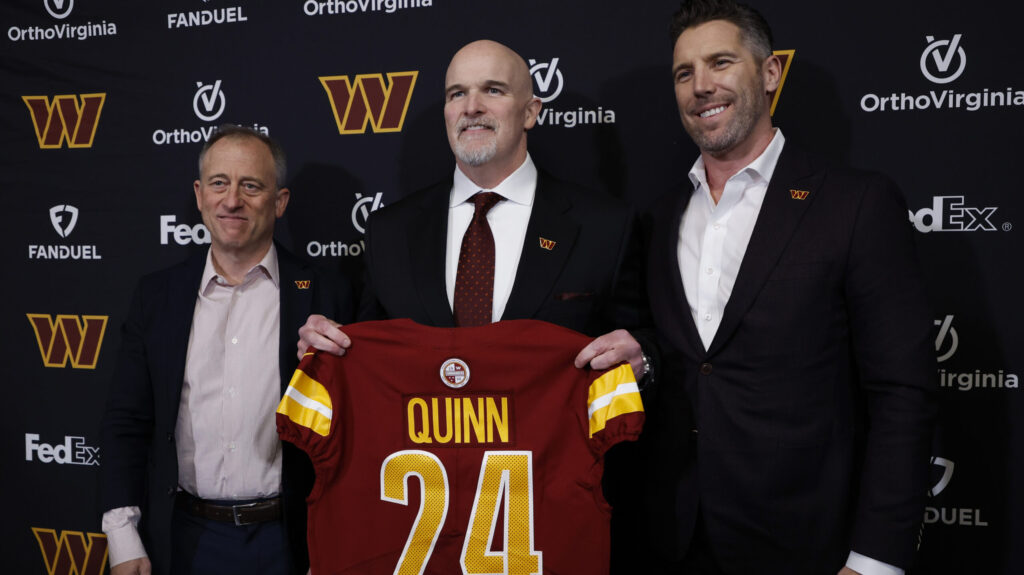
 Washington Commanders
Washington Commanders
This situation is similar to the one in Chicago, only without the quarterback trade chip and with much more unknown. The Washington Commanders have the second overall pick, likely to be used on a quarterback, and the most available cap space.
The Commanders may get aggressive and trade up with the Bears to ensure they get their top quarterback instead of being reactive to whatever Chicago does with the first pick. Drafting Caleb Williams and pairing him with offensive coordinator Kliff Kingsbury, plus receivers Terry McLaurin and Jahan Dotson, could jump-start the offense. That could be true, even if Washington stays at No. 2 overall.
What stands out about the Commanders is the cap space and the need to fill some holes on the defense. After trading away Montez Sweat and Chase Young, Washington has no starting-caliber edge rushers. Kendall Fuller and Kam Curl, the best players in their 2023 secondary, are free agents.
This roster can be a blank canvas for the leadership group of Josh Harris, Adam Peters and Dan Quinn. By snap-weighted age, their defense was the sixth-youngest, though they had the 10th-oldest offense.
A ton of that age on offense came along the line. Charles Leno Jr., 32, is still on the roster but his release could open up $7.3 million in cap space. Per Sports Info Solutions, Leno had one of the highest blown passing block rates among left tackles.
The move makes sense, but it would leave Washington needing to replace three players on the offensive line.
Washington needs talent on defense, but some decisions could also be made to start fresh, namely with DT Jonathan Allen. Allen is 29 and will have a $21 million cap hit in 2024, but the Commanders could save about $9.5 million with a trade or release. Allen has two years remaining on his contract.
Under previous ownership, Washington would have thrown money around at the top of the market to bring in big names. We’ll see how the new ownership group approaches the line between having the money to spend and needing to bring in pieces to fill out the roster with starter-level talent.
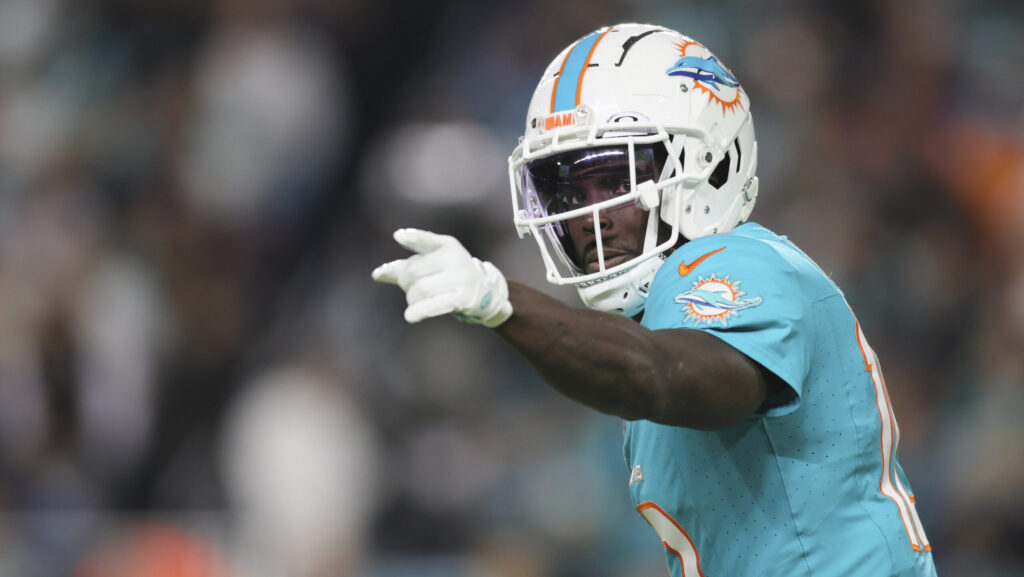
 Miami Dolphins
Miami Dolphins
This is a crossroads offseason for the Miami Dolphins. It could shape their trajectory for the next few seasons. Miami is nearly $60 million over the cap after running out the sixth-oldest team in the league by snap-weighted age.
The Dolphins appear locked into the top of the roster, which includes Tyreek Hill, Jalen Ramsey, Bradley Chubb, Xavien Howard, and Terron Armstead for this season. Those players are all set to count for at least $20 million on the 2024 cap. Only Howard would save Miami cap space in that group with a release. Armstead would do so with a post-June 1 cut.
What makes Miami fascinating is how it will choose to move around the money to get cap-compliant while continuing to build the roster for the future. Restructuring the players mentioned above would push more money into future years.
Miami could save about $12.5 million with a restructuring of Hill’s deal, but that would push his cap hit from $34.2 million to $40.5 million in 2025, making it harder to move on after the 2024 season if necessary.
The same is true for Ramsey, who turns 30 in October. The Dolphins could drop his $27.3 million cap hit down to $9 million for 2024 but would push him up to $27 million for 2025.
Those two moves, plus a release of Emmanuel Ogbah, get the Dolphins to around $7 million over the cap.
The most significant decision for the Dolphins is what to do with Tua Tagovailoa. He’s scheduled to make $23.2 million on his fifth-year option. In an ideal world, Miami might choose to ride that out and see if there is another late-season decline, like those that have struck the Dolphins over the past two seasons.
But Miami might not have that luxury and could use an extension to lower Tagovailoa’s cap hit for 2024. However, any big extension would include a significant future commitment to Tagovailoa and this version of the offense. The Dolphins have been vocal in support of the quarterback, but how that will turn into dollars and years on a new deal remains to be seen.
The Dolphins also have a top-of-the-market pending free agent in Christian Wilkins, along with offensive linemen Connor Williams and Robert Hunt.
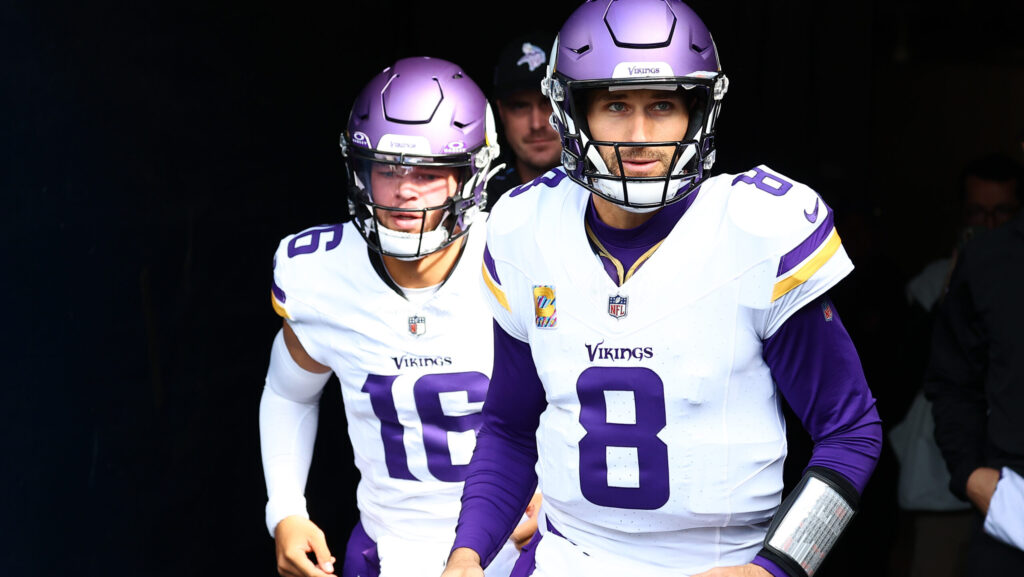
 Minnesota Vikings
Minnesota Vikings
While there are other big quarterback questions around the league, the Minnesota Vikings might have the one with the most significant immediate impact. Kirk Cousins is the top free agent at the position but is in his late 30s and coming off an Achilles tear.
>>READ: Top 100 NFL Free Agents
If the Vikings bring Cousins back, they’ll be powering forward with a version of the team that worked well but fell on some bad luck at the start of the season after an insane run of luck in 2022.
With Cousins on the field, the Vikings were a borderline top-10 offense that had figured out a passing game without much rushing efficiency to complement it. Cousins has been the best version of himself under Kevin O’Connell and has gotten more out of the offense than he had when a play-action-heavy scheme was doing much of the heavy lifting under Kevin Stefanski.
Given the circumstances, a Vikings return could be acceptable and possibly the best option for both sides. But Minnesota could also be looking toward the future.
The Vikings were reportedly interested in moving up in the draft for Anthony Richardson last season but could not make a trade. Minnesota selected 23rd, and getting up into the top six, where Richardson was drafted would have required a massive haul.
This year, the Vikings are picking 11th, which could be a more palatable spot for a team to trade back into if they entertain an offer from Minnesota. The Vikings could make that kind of move whether or not they bring Cousins back for 2024.
The quarterback question will be especially important for the Vikings because their pass-catchers are ready to win now. T.J. Hockenson helped transform the offense once he came over from the Detroit Lions. Jordan Addison thrived as a rookie receiver. Then there is Justin Jefferson, arguably the best receiver in the league, who is in line for a market-setting extension of his own.
Cousins could bring instant credibility to an offense if he goes elsewhere in free agency, which would have a significant ripple effect on quarterback movement elsewhere. If they need a quarterback, the Vikings are set up as one of the best landing spots to plug one in, whether it be a rookie or veteran — but the veteran options are not incredibly appealing.
Cousins’ decision will set the tone for how free agency and the draft play out.
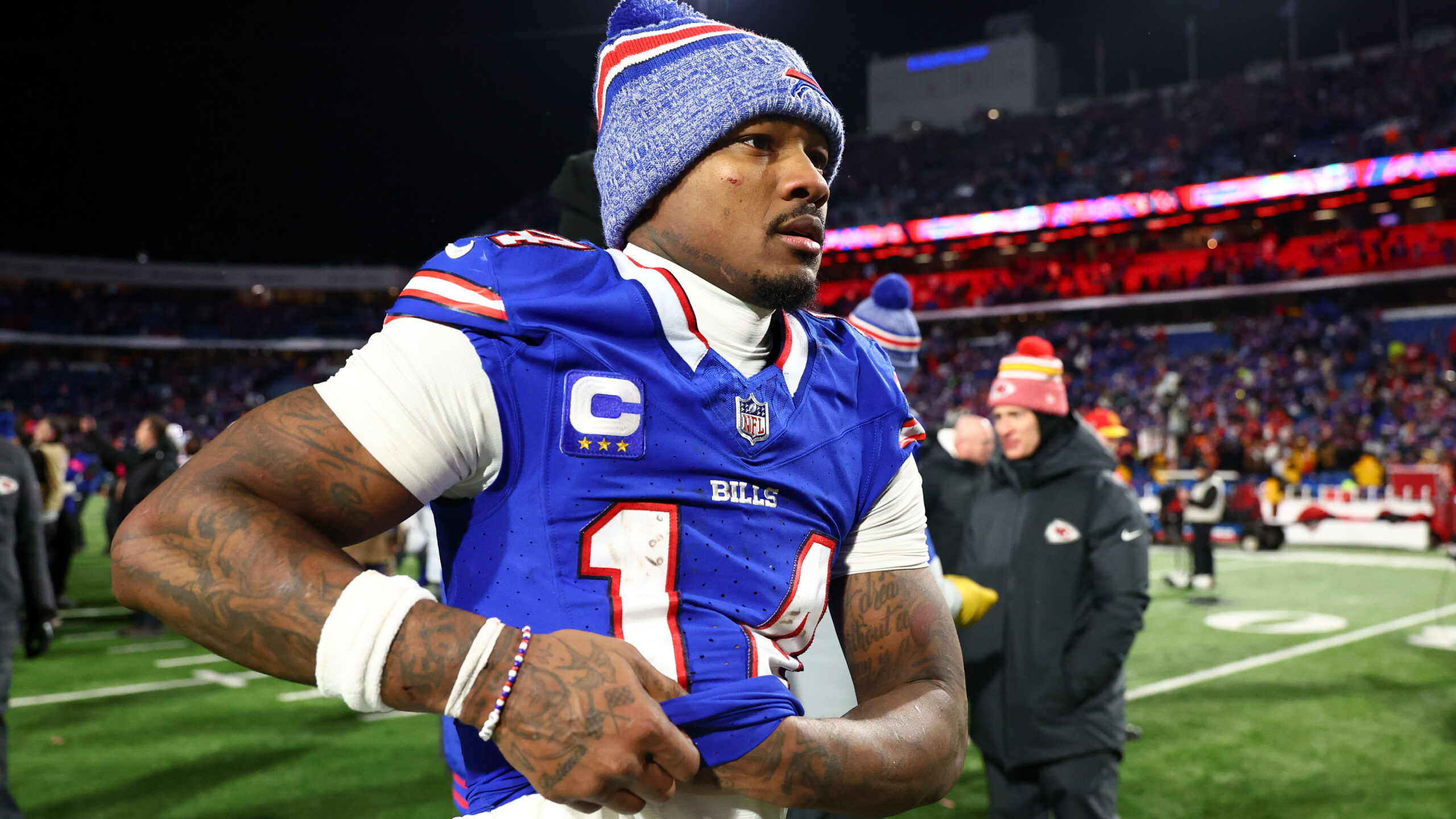
 Buffalo Bills
Buffalo Bills
The Buffalo Bills are in a similar spot to Miami, but at least they have the quarterback situation figured out.
The Bills were the fifth-oldest team in the league, with the fourth-oldest defense by snap-weighted age. They’re currently $54.5 million over the cap.
A benefit of having the quarterback is the ability to not worry about the contract status and use that to open up space. The Bills can create $23 million in cap space with a maximum restructuring of Josh Allen’s deal without any worry about pushing money into the future.
But Allen is just a small piece of this puzzle. After all the roster-building and some in-season turmoil, the Bills still could not get past the Kansas City Chiefs in the playoffs. Every move over the past few offseasons has been with that goal in mind, and now Buffalo is tasked with figuring out the next version of the roster that can reset and still take on that goal.
Some of the most significant swings the Bills took did not work out. Von Miller has not been the presence Buffalo had hoped for due to missed time and decreased effectiveness during his two seasons with the Bills, including a sackless 2023. If the Bills wanted to move on from the 32-year-old, they would have to do so as a post-June 1 cut, which would only open up $6 million in cap space.
There will also be questions about the status of Stefon Diggs, who may or may not be at the end of his time with the Bills. Over the second half of the season, Diggs’s efficiency declined while his usage was still among the top receivers in the league. The Bills mostly limited his role to screens and go routes after he had 748 receiving yards through Week 8.
If Diggs wants out, the Bills would also have to mark that as a post-June 1 transaction, as Buffalo would lose $3 million in cap space if a move were made before then with his current contract. And if that happens, the Bills would need to replace Diggs and Gabe Davis in the offense.
Buffalo is in a strange spot as one of the better teams in the league, but one that could look vastly different in 2024. There might not be a higher degree of difficulty this offseason for a team to balance staying in contention, resetting the books and starting the next era all at the same time.

